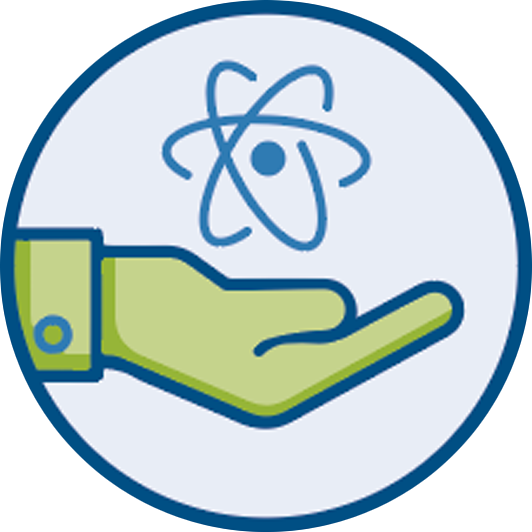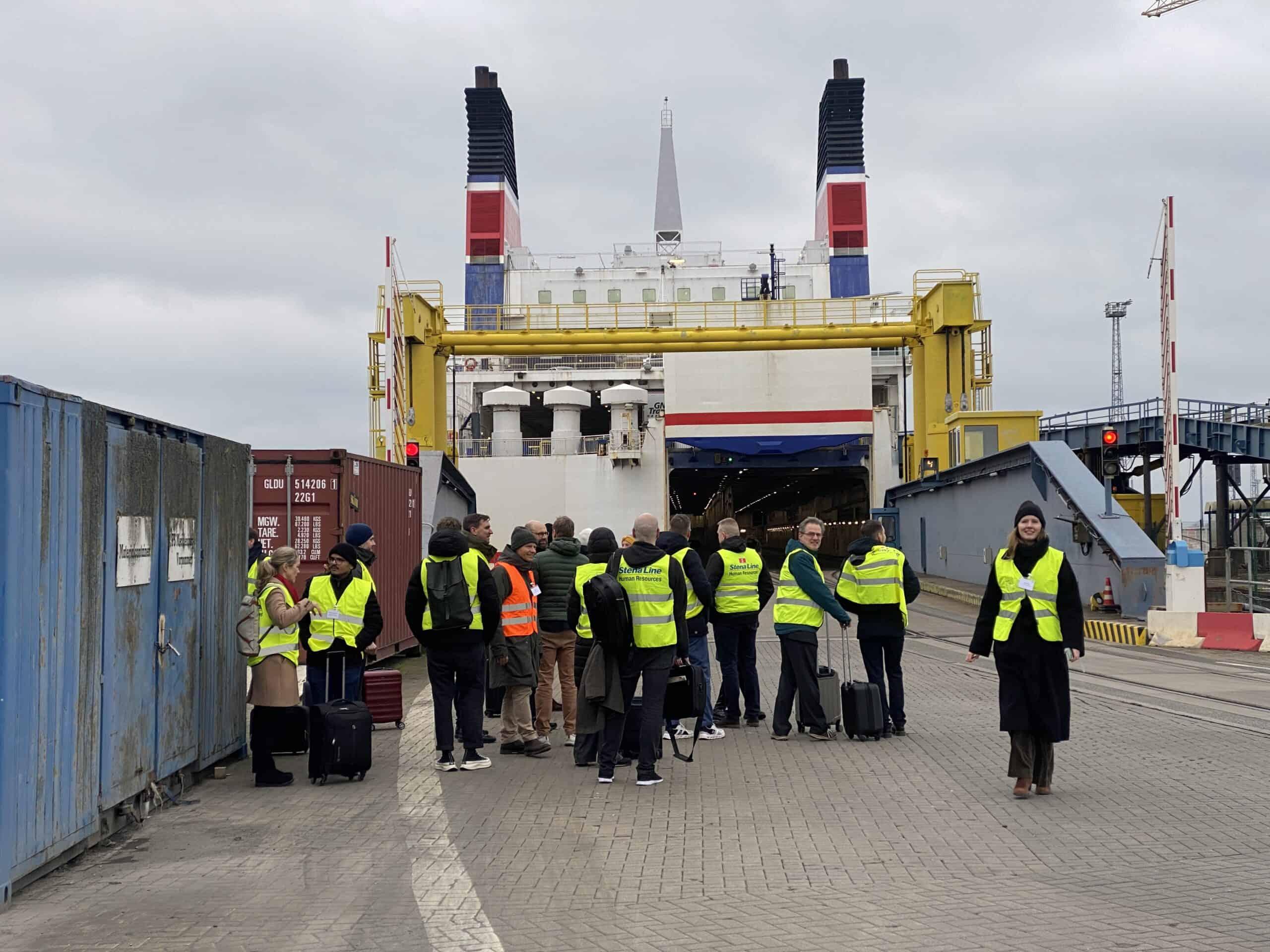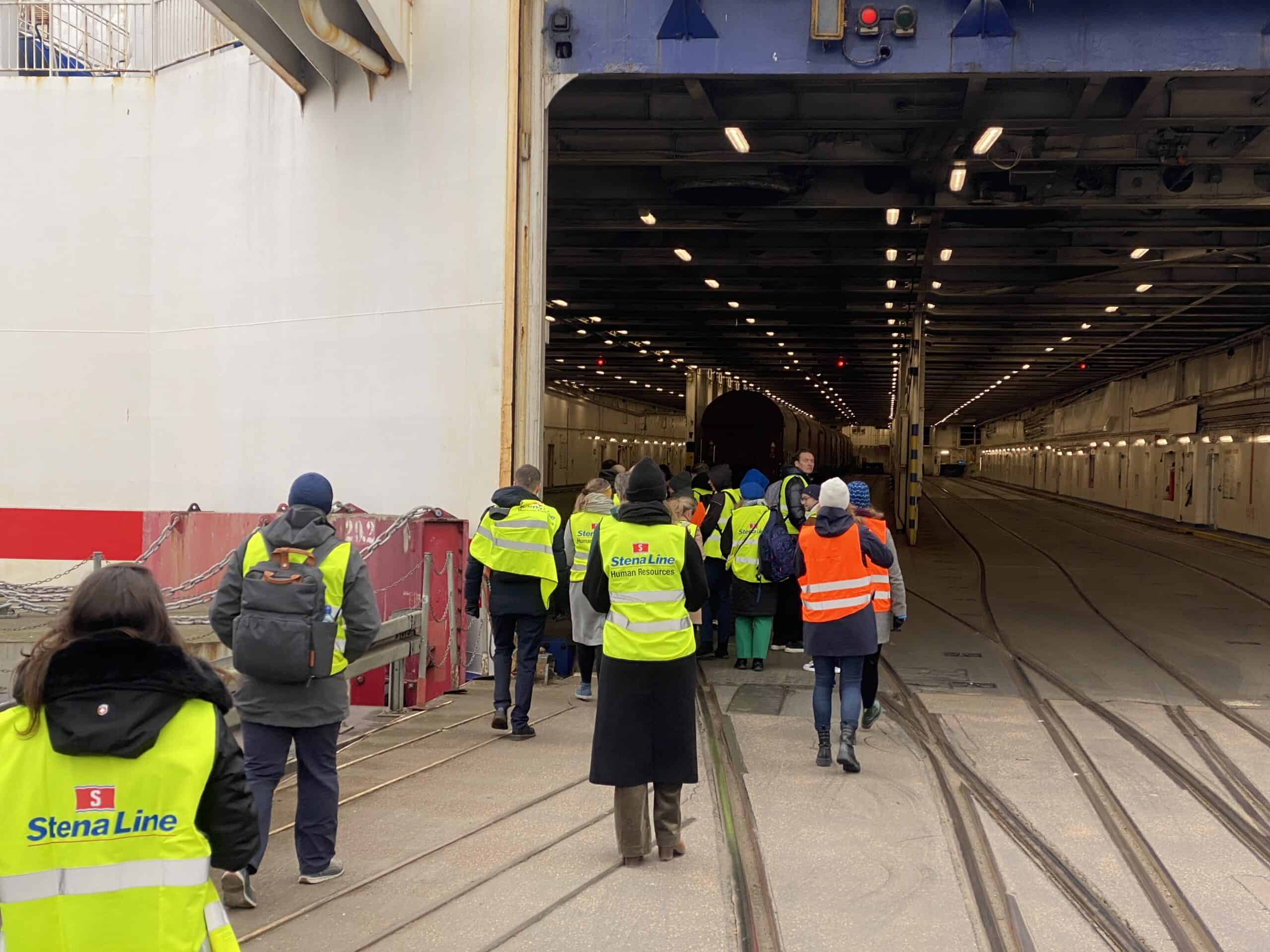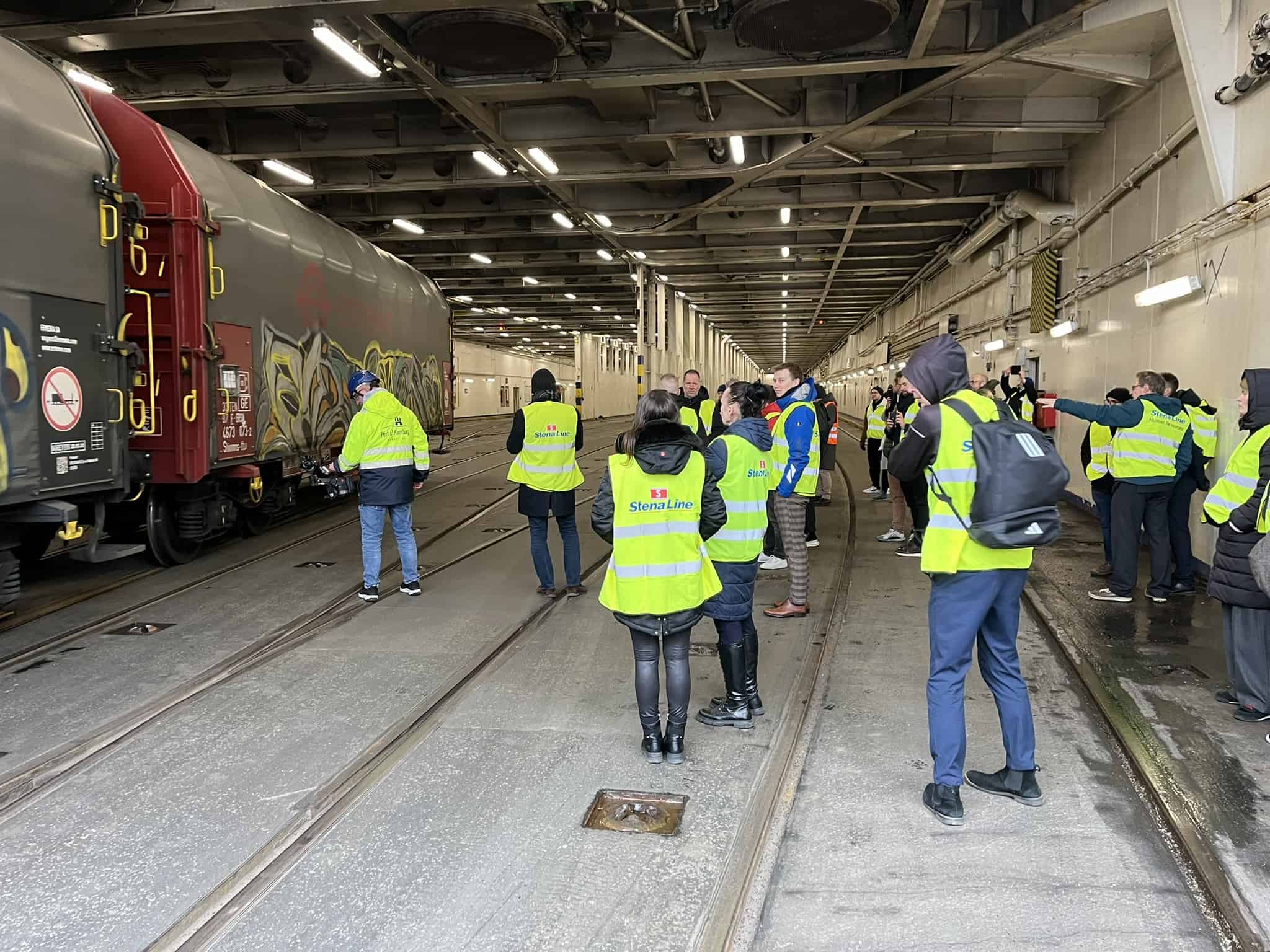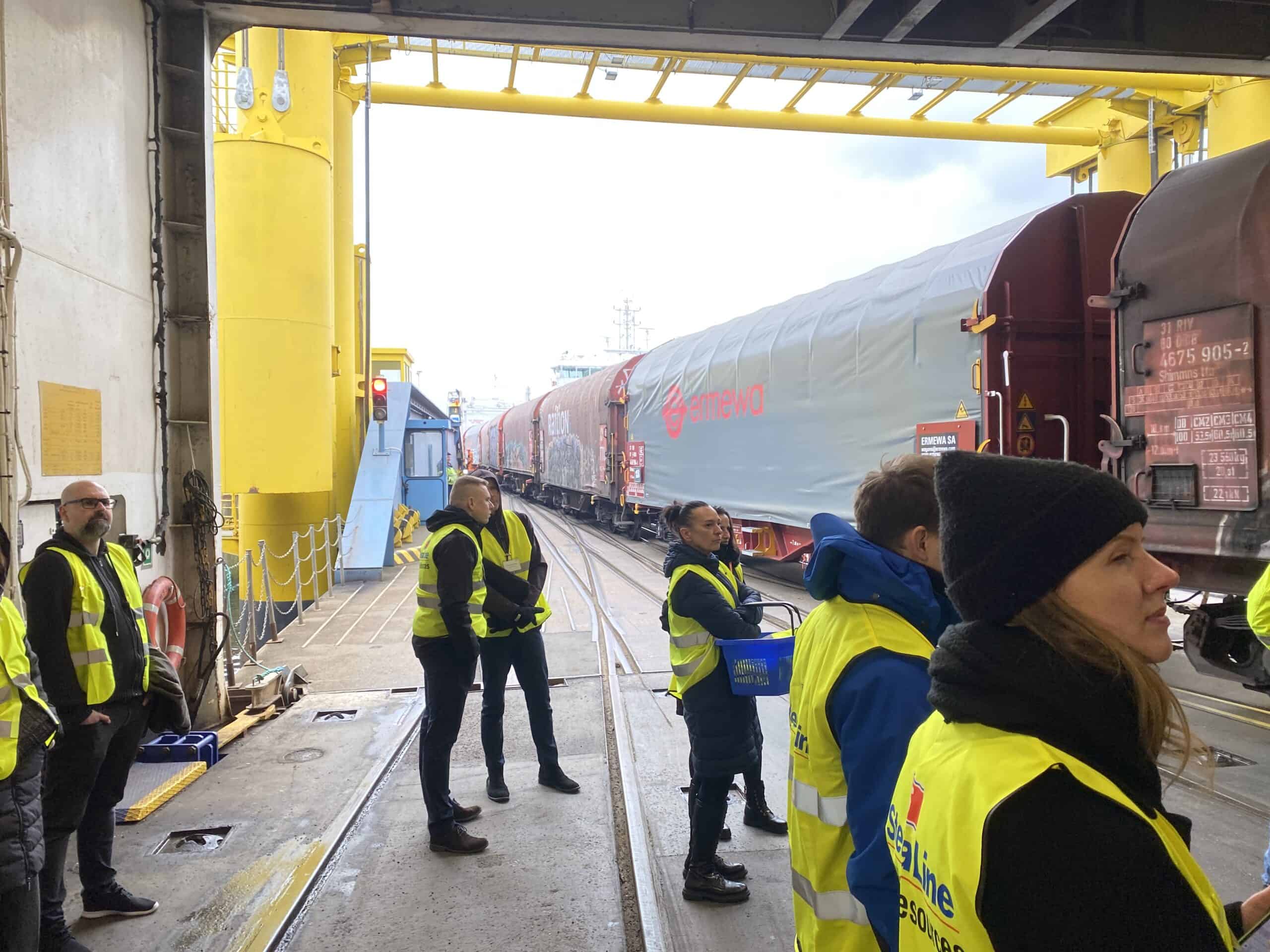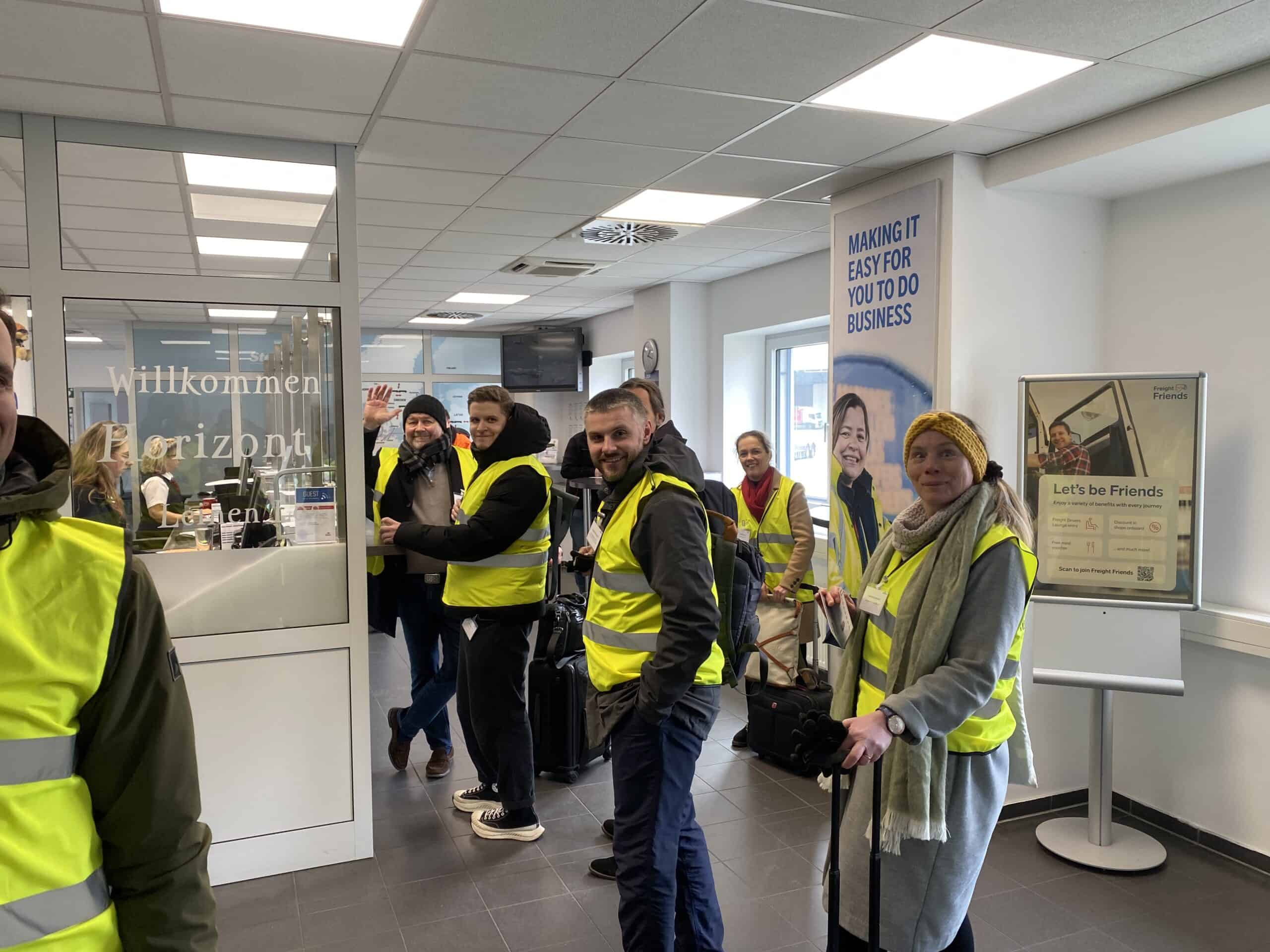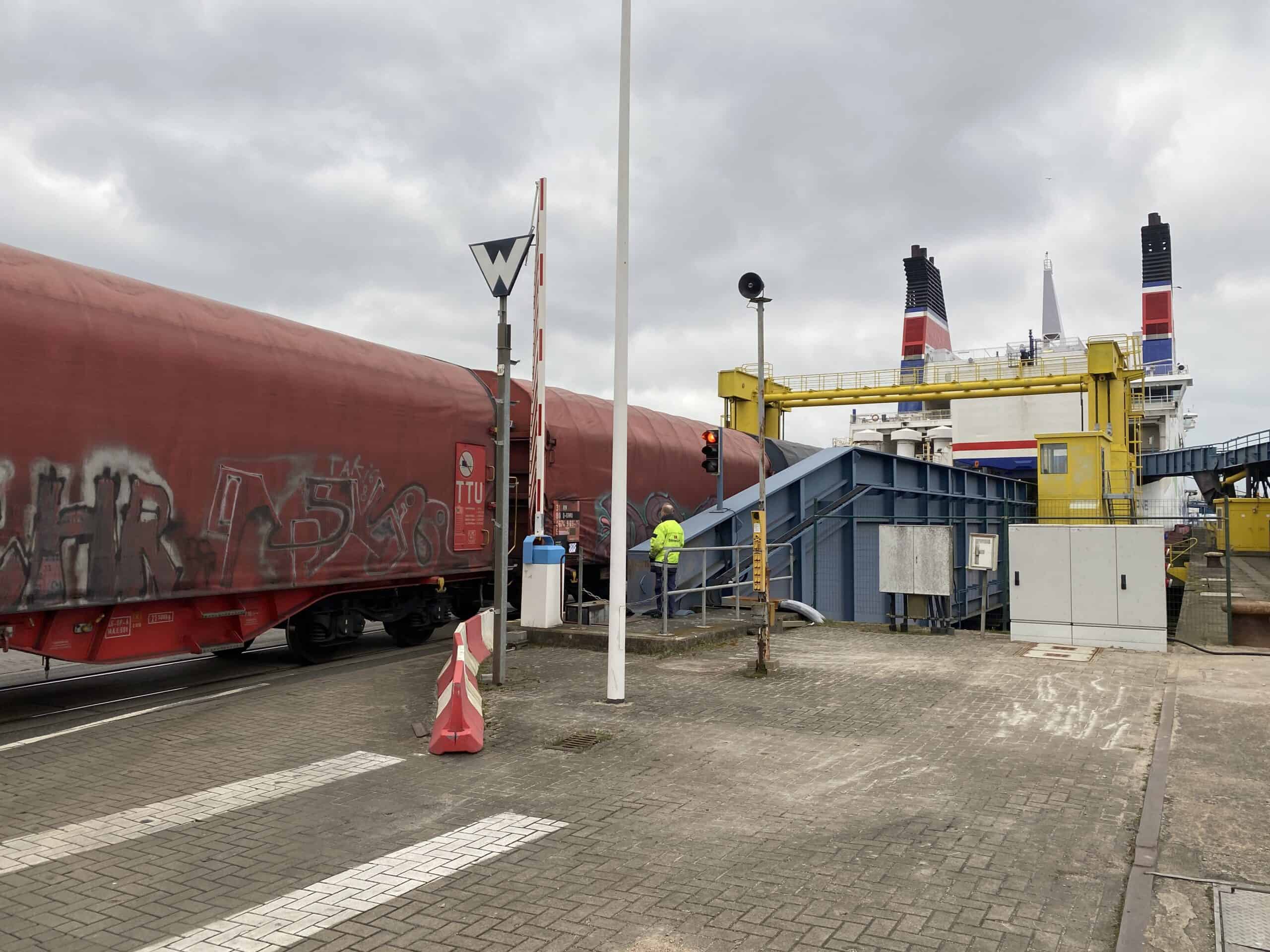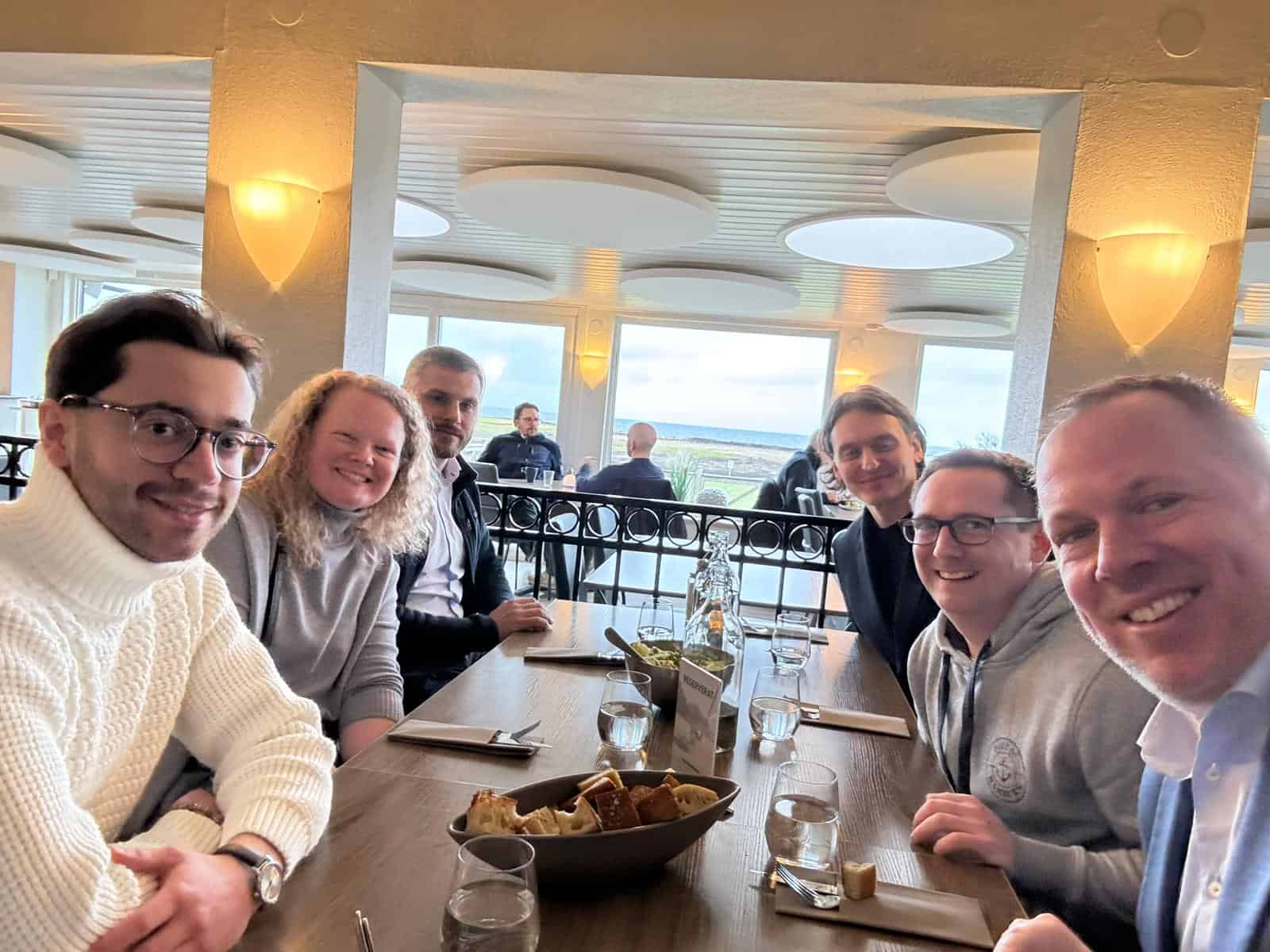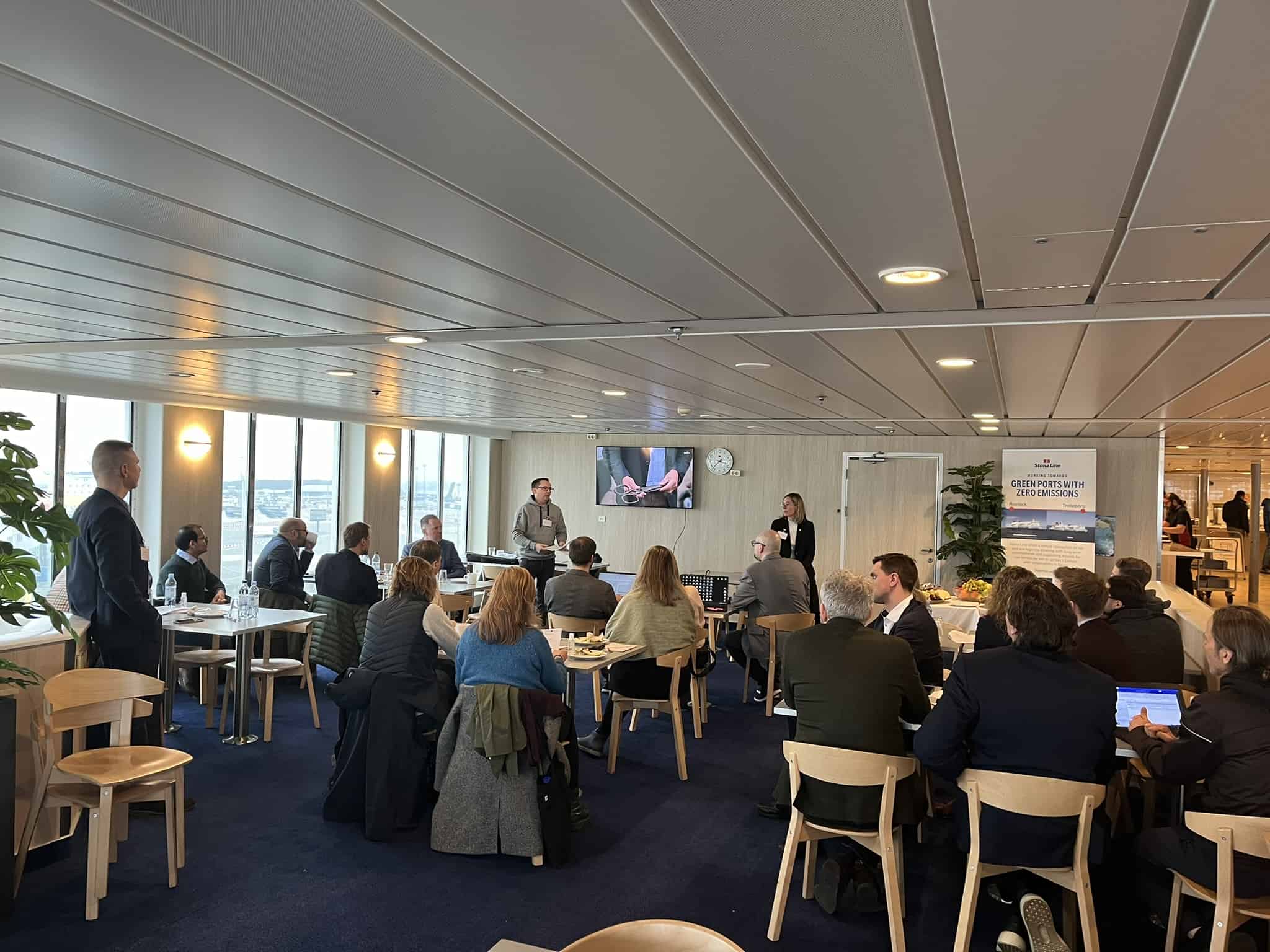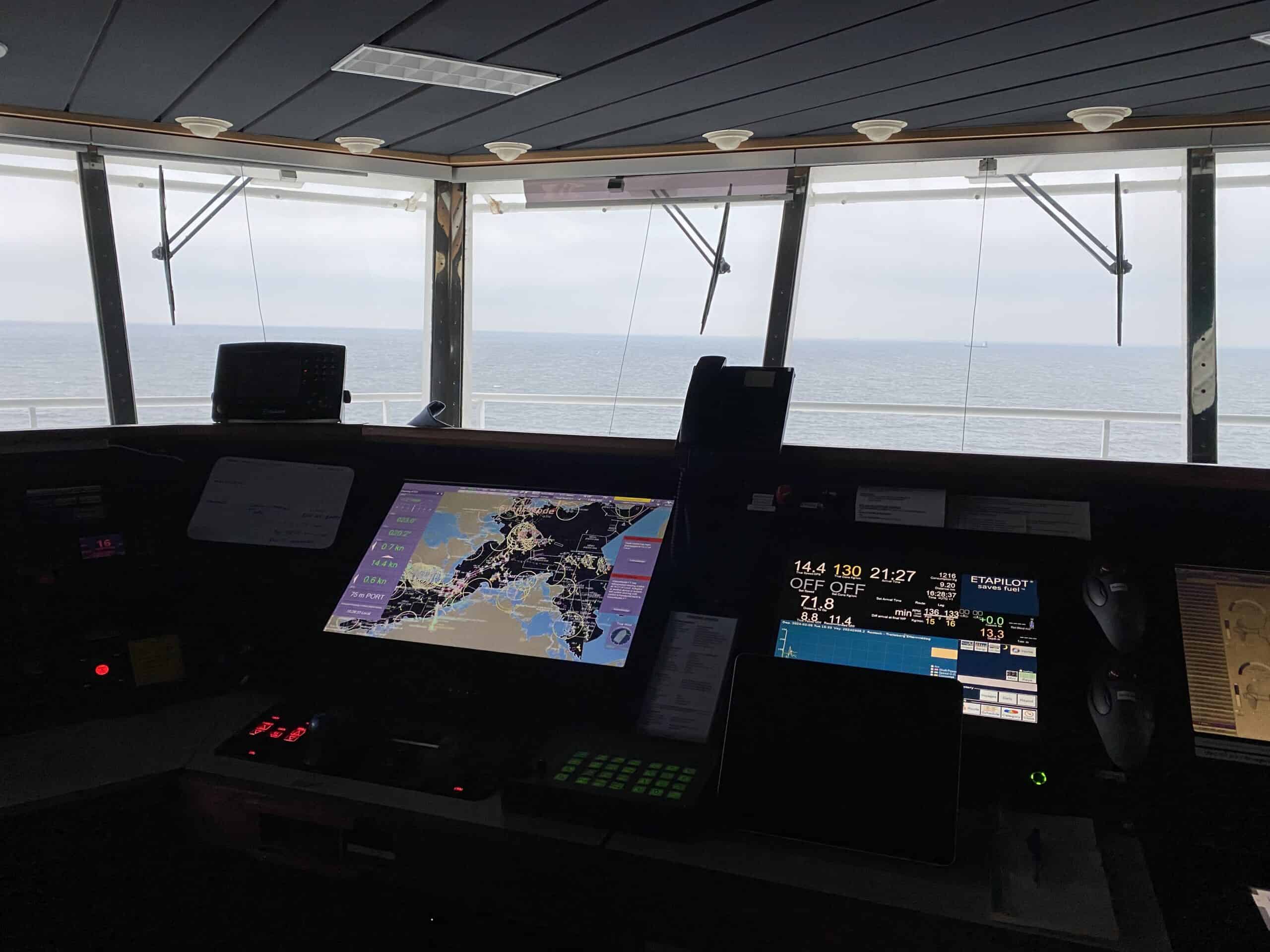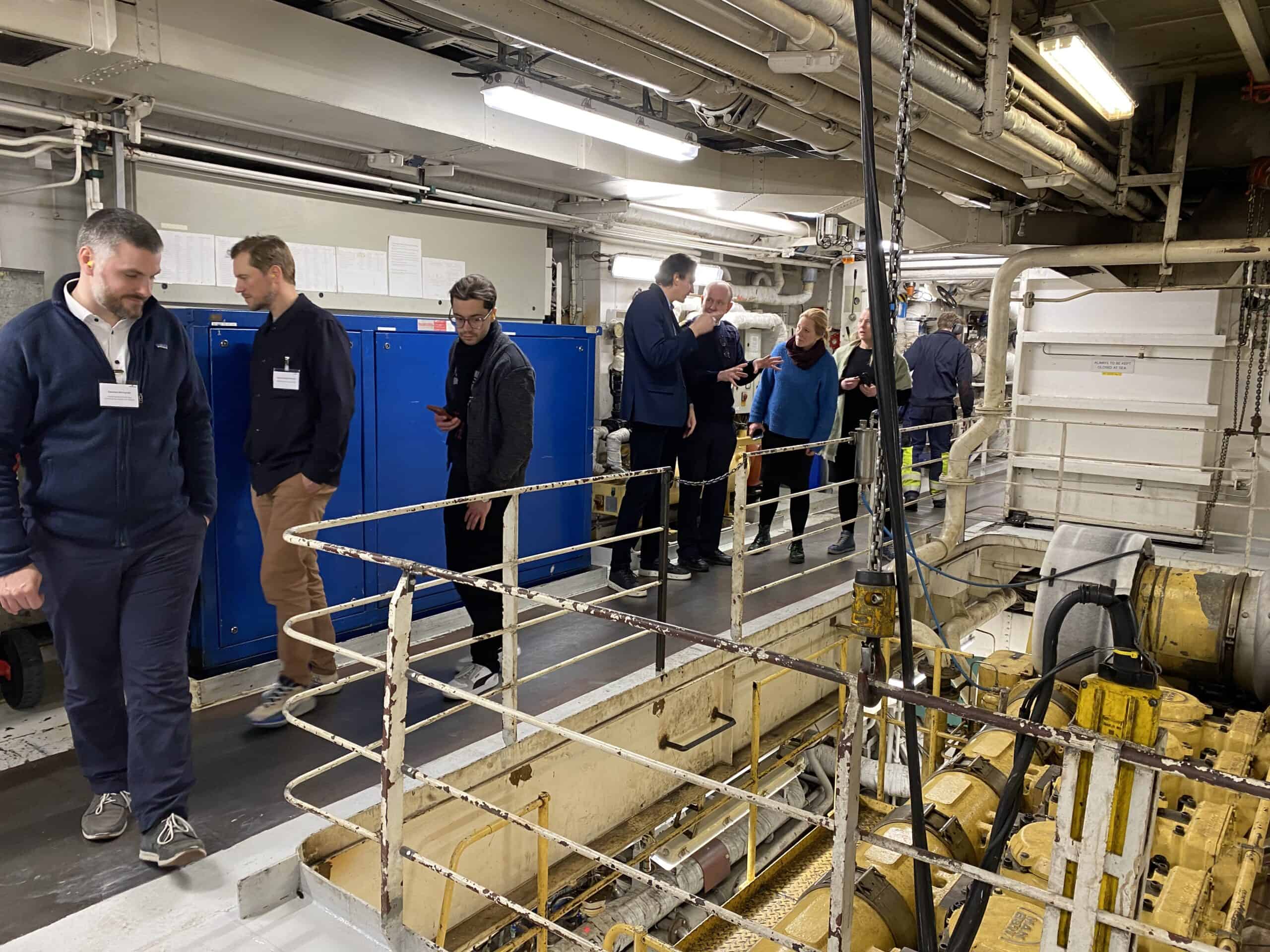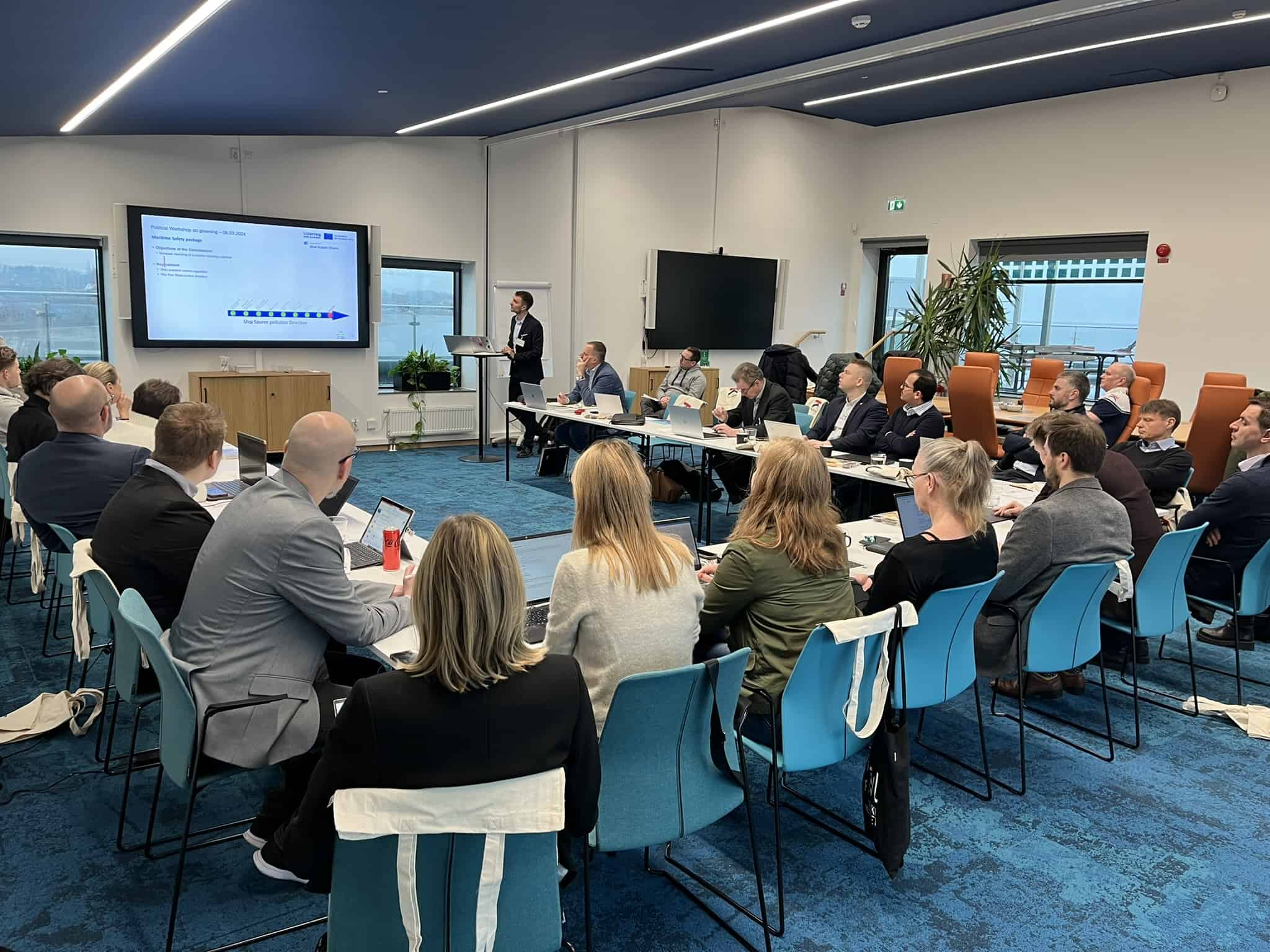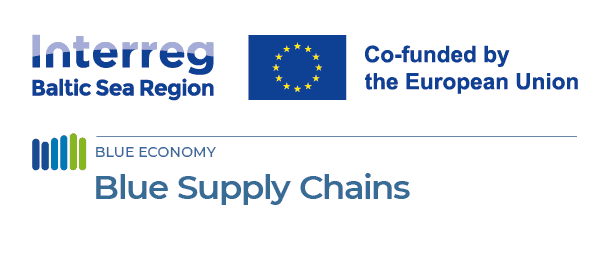
Blue Supply Chains – one year in
22 April 2024
A total of six pilot projects, accompanied by additional activities, make up the main body of the BSC project, developed by partners from eight European countries from within the Baltic Sea region (BSR). They are centered around three main goals – to evaluate measures for the further electrification of handling equipment in ports; to develop strategies for the provision, handling and storage of alternative fuels; to promote environmentally friendly transport chains in the hinterland, with a focus on the development of combined transport.
All good things come in threes
It is a tale of three partners – Ports of Rostock and Trelleborg, and Stena Line – coming together to explore opportunities for increasing the usage of greener transport solutions. In this particular case the goal is to improve the rail ferry service between the two ports (one of only two such services in the region!), and ultimately boost green intermodal terminal handling.
A detailed capacity study is currently underway, commissioned by the Port of Trelleborg, analyzing current volumes, emerging trends that need to be considered, as well as the future potential of rail ferry connections. The study, based on a three-step process, is expected to be fully completed by the end of H1 2024.
Port of Rostock is also busy gathering data, crucial before committing to any long-term plans, as infra- and superstructure costs related to the transfer of railcars via ferry are very high. There are multiple aspects to consider, such as the aforementioned financial burden, the presently volatile geopolitical situation in the BSR, the matter of space required for shunting yards and ramps specialized for railcar handling, as well as volume growth prospects, which at the moment seem to be high. Results of the study will be available by the end of April 2024.
CO2 reduction possibilities are also being explored in Rostock by analyzing the feasibility of shore power supply for berthing vessels. The analysis of legal, technical and economic framework conditions has been already completed, and it is all about the nitty-gritty right now, as our colleagues take a closer look at the required technical data necessary to evaluate potential technological approaches in order to determine the preferred solution variant.
Back to the rail ferry, Stena Line remains in close contact with the customers, identifying their needs and expectations, all vital information for the future of the connection. In the end, it is the customer interest that determines the longevity of such a service. Customer workshops are planned in order to promote the project and find new partners, so that fresh ideas for possible out-of-the box solutions may be gathered.
Stena Line is also working closely with another BSC project partner – Modility, the provider of online booking services for freight forwarders. The goal is to integrate the rail ferry connection into the booking tool they offer. The two partners are currently defining the pricing components that must be taken into account with the technical development set to begin shortly.
Green is the new black
Green is truly the name of the game for the members of the “Swedish consortium” within the BSC project. The group consists of the Port and City of Umea, Umea Energy, INAB (Infrastructure in Umea AB) and IVL (Swedish Environmental Research Institute) and is currently focused on two activities:
- A knowledge-building study examining the current and future situation for ship bunkering in Sweden, accompanied by an attempt at a national strategy for production, loading and bunkering of fossil-free fuels and local fuel production
- A case study aiming to prepare port authorities/port operators (and other involved stakeholders) for the introduction of green maritime fuel in the Umea region
Finishing touches are being applied to the final draft of the report covering the “Role of port authorities in green energy supply for transport chains”, based on extensive literature reviews, interviews with selected industry actors, as well as workshops and meetings with other ongoing research projects and government assignments.
The report will include a detailed assessment of feasibility, costs and environmental aspects, a cost/benefit analysis of low-carbon fuels production in Sweden and specific market segments, and an assessment of energy consumption by vessels calling at Swedish ports. The report is set to be finalized by June 2024.
The consortium is also tasked with developing a roadmap for the provision of green energy for transport chains starting and ending in ports. A seminar will take place in Umea in May 2024, marking the starting point for the work related to the roadmap’s creation.
Navigating towards sustainability
Switching our attention from Sweden to Lithuania, we arrive on the river Neman, connecting Klaipeda and Kaunas. The goal of this pilot project, developed by the Lithuanian Inland Waterways Authority, supported by the Klaipeda Science and Technology Park (KSTP), is to establish the first green internal waterway transport corridor in Europe.
In order to accomplish this ambitious task, KSTP will conduct a technological study aimed at evaluating fuel solutions for the Klaipeda-Kaunas waterway, with a focus on exploring the use of electric batteries, methanol, ammonia and hydrogen as alternative fuels. The main hero of this story is an electric tugboat which will push barges up and down the river Neman.
Various vessel characteristics, such as air drag, maximum speed and flow rate, have been carefully analyzed. The technical specification of the tugboat is publicly available and calculations show that up to 13 MWh of energy will be required for the upstream trip. The challenge now will be to find a solution for equipping the vessel with enough power to make the voyage. The partners are also evaluating aspects related to the development of charging stations, including costs, optimal locations and the choice of the provider. Objectives for the technological study are being refined and the procurement process should begin shortly.
Electrifying developments
The Port of Skagen and the Gdynia Container Terminal have taken it upon themselves to take a closer look at opportunities for combating GHG emissions from port operations by means of electrification. These include the retrofitting of RTG cranes and integration of on-shore power supply (OPS) systems.
A study conducted by the University of Gdańsk aimed to identify challenges linked to technical and economic aspects, the environmental and operation motivations, as well as mapping out the approach to implementing these green technologies. The study also includes an analysis of best practices, lessons learned and recommendations for ports interested in such solutions.
The aspect of transferability played a big part in the study, considering points such as technical adaptability, environmental impact, economic benefits and regulatory compliance, ideally allowing other medium and small ports to take advantage of the results of the pilot projects. The draft version of the report has been finalized and is currently under review. In case of the Port of Skagen, the tender procedure for an OPS system installation has been conducted and the final decision regarding its location has been made. The system is expected to be delivered in Q1 2025.
Transport greening – what is it actually about?
One of the highlights of this year’s first partner meetings was certainly the political workshop on greening, organized by SGKV and UIRR. It quickly becomes apparent that a common definition of the process of greening of the transport sector hasn’t been agreed upon. One most accurate, and chosen by the BSC project to be followed for the time being, is one provided by UNESCO. It reads:
“The process of pursuing knowledge and practices with the intention of becoming more environmentally friendly, enhancing decision-making and lifestyle in more ecologically responsible manner, that can lead to environmental protection and sustainability of natural resources for current and future generations”.
The workshop featured an overview of European greening policies and legislative initiatives, identifying the packages relevant for transport. An interactive, online catalogue of greening policies and legislative initiatives is currently in development. It will be hosted by the European Parliament and updated on a monthly basis.
A more detailed look at SGKV’s and UIRR’s activities will be the theme of an upcoming article, so stay tuned!
A strong start to a new year
The first partner meeting of 2024, held over two days at the beginning of March, is a testament to the incredible level of engagement and commitment from all of the BSC project partners. Without a doubt, the opportunity for a behind the scene look at Stena Line’s rail ferry connection, was an absolute treat for everyone present. It gave a great insight into the complexity involved in conducting such an operation.
The participants had the unique chance to witness first-hand the unloading of rail wagons from Stena Line’s vessel at the Port of Rostock, boarding the ferry afterwards for a trip to Trelleborg. A big thanks goes to all of our hosts for providing such an exciting background for the workshops and discussions.
Apart from the various updates from the project partners, the meeting also included a new approach to stakeholder mapping, introduced by the project’s lead partner, Port of Hamburg. Its main goal is to offer a step-by-step guidance on how to identify and when to include different parties involved during project implementation, also putting a strong emphasis on the transferability of results to other stakeholders from the BSR. More insights into this innovative approach to stakeholder mapping will be provided in further articles, so make sure to follow the BSC project’s LinkedIn channel and website.
Last but not least, below you will find a gallery featuring impressions from the partner meeting. Those showing the rail ferry in action are particularly worth checking out!



